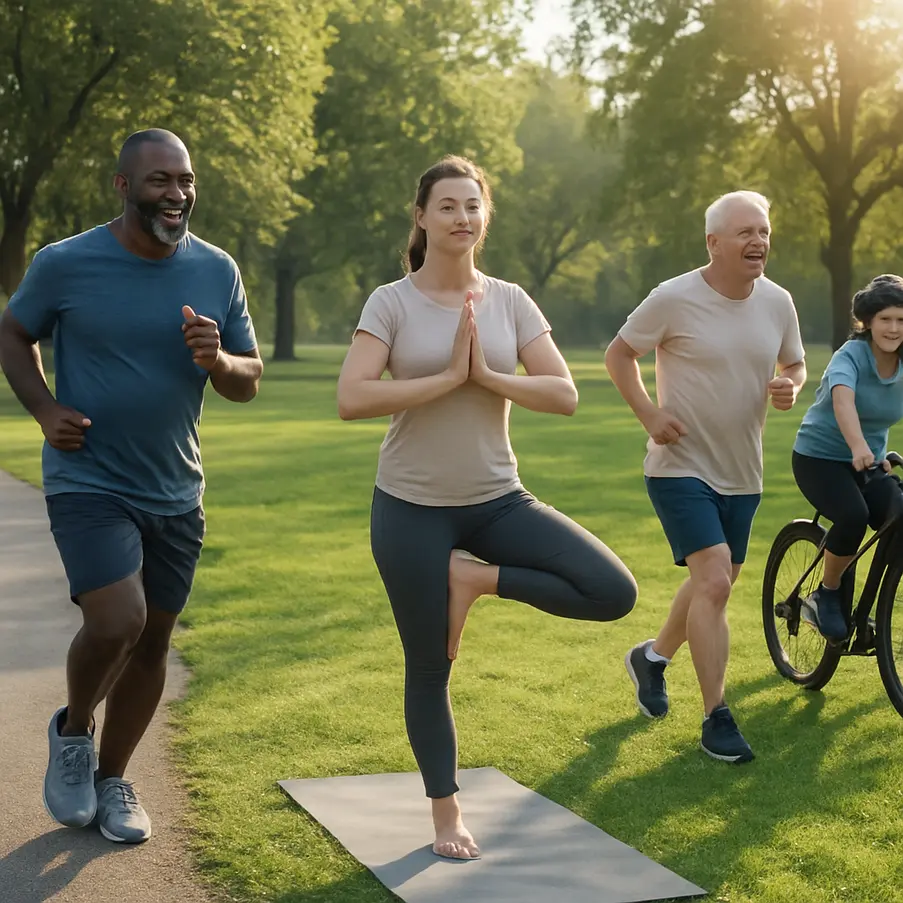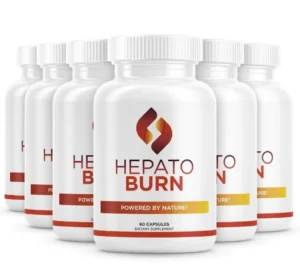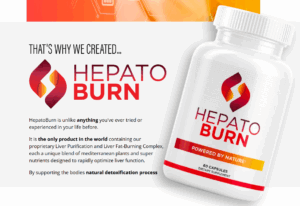Regular Exercise for Longevity
Embracing a lifestyle that includes regular exercise is one of the most effective ways to ensure longevity and vibrant health. Exercise not only improves physical fitness but is also a formidable tool in enhancing mental well-being and combating various age-related diseases. It plays a crucial role in maintaining a healthy weight, strengthening the cardiovascular system, and even boosting the immune response. As we age, the significance of keeping active grows, making exercise a non-negotiable aspect of a long and healthy life. By understanding the importance of regular exercise for longevity, you can take the necessary steps toward a more fulfilling, active, and enduring lifestyle.
Physical Benefits: Building a Resilient Body
Regular exercise contributes significantly to building a resilient body, ultimately aiding longevity. One of the primary benefits is muscle strengthening. Engaging in strength training exercises, for instance, not only increases muscle mass but also enhances metabolism. This improvement in metabolic rate aids in maintaining a healthy weight, reducing the risk of obesity-related diseases. According to a study published in Medicine & Science in Sports & Exercise, adults who performed regular strength training exercises showed a remarkable decrease in all-cause mortality rates.
Cardiovascular health also reaps significant benefits from consistent physical activity. Aerobic exercises such as walking, running, or cycling improve heart health by lowering blood pressure and cholesterol levels. The American Heart Association recommends at least 150 minutes of moderate-intensity aerobic activity per week to maintain optimal cardiovascular health. Indeed, a large-scale study featured in The Lancet showed that individuals engaging in regular aerobic exercise experienced a 30% lower risk of cardiovascular events compared to their sedentary counterparts.
Bone health benefits immensely from an exercise regimen as well. Weight-bearing activities, such as walking or resistance training, increase bone density, reducing the risk of osteoporosis and fractures as we age. A comprehensive review published in the Journal of Bone and Mineral Research highlighted that adults who consistently engaged in weight-bearing exercises exhibited increased bone density and a lower incidence of hip fractures.
To achieve these physical advantages, a diverse workout routine incorporating aerobic, strength, and flexibility exercises is crucial. Aerobic activities enhance endurance, strength training builds muscle mass and improves metabolic rate, while flexibility exercises ensure joint health and reduce injury risk. For more details on creating a balanced workout plan, consider reading our comprehensive guide on at-home workouts for daily fitness, which covers various exercise types suitable for all fitness levels.
A commitment to regular exercise leads to a resilient body that can withstand the challenges of aging, offering a greater chance at a longer, healthier life. With these physical health benefits, it’s clear that integrating regular exercise into our lives is key to unlocking a path to longevity.
Mental and Emotional Wellness: A Balanced Mind
Exercise is more than a mere physical endeavor; it’s a powerful tool for fostering mental and emotional wellness. Engaging in regular physical activity can significantly reduce stress, a benefit often confirmed by a palpable sense of relief following a good workout. This stress reduction is largely attributed to the release of endorphins, hormones that promote a feeling of well-being. Alongside endorphins, regular exercise enhances mood and mental clarity, creating an environment within the mind that is conducive to longevity.
Elevated endorphin levels bring about a natural high, often referred to as the ‘runner’s high.’ This phenomenon not only boosts mood but also diminishes anxiety and symptoms of depression. The consistent release of these chemicals nurtures a mental space where positivity and peace replace stress and worry. By creating this shift in mood and anxiety levels, exercise becomes an essential component of a longer, healthier life.
Mind-body exercises like yoga, tai chi, and Pilates are particularly effective for improving mental well-being. These practices incorporate deliberate movements and concentrated breathing techniques, fostering mindfulness and emotional balance. For those seeking enhanced core strength while also nurturing a balanced mind, Pilates offers dual benefits (learn more about Pilates exercises).
Incorporating exercises focused on both the body and mind build resilience against stressors and cultivate mental clarity. Enhanced mental clarity leads to better decision-making and problem-solving abilities, essential skills that support daily health choices and overall longevity. Stress mitigation and mood enhancement from regular physical activity contribute to a stable foundation, essential for facing life’s challenges with resilience and optimism.
This chapter highlights the undeniable link between physical activity and mental balance. As you move forward, remember that each step you take not only strengthens your body but also fortifies your mind, contributing to a longer, more fulfilled life. By exercising regularly, you are investing in health that encompasses both body and mind.
Hepato Burn Product
Disease Prevention: Battling Age-Related Illnesses
Exercise serves as a powerful ally in the fight against age-related diseases. Regular physical activity can dramatically lower the risk of chronic illnesses such as heart disease, diabetes, and Alzheimer’s. Scientific research repeatedly underscores the importance of exercise in maintaining health throughout the aging process.
One prevailing benefit of regular exercise is its role in cardiovascular health. Activities that increase heart rate, like brisk walking, running, or swimming, enhance circulation and strengthen the heart muscle. Studies have demonstrated that engaging in at least 150 minutes of moderate aerobic activity per week can reduce the risk of heart disease by up to 30%.*
Beyond cardiovascular benefits, exercise is crucial in diabetes prevention and management. It helps regulate blood sugar levels and increases insulin sensitivity, which are key factors in preventing type 2 diabetes. Specific exercises such as resistance training and high-intensity interval training (HIIT) have been shown to be especially effective. These activities not only combat insulin resistance but also aid in reducing abdominal fat, a significant contributor to diabetes.
Alzheimer’s disease, a growing concern for aging populations, may also be forestalled through regular physical activity. Research points to exercise as a means to improve cognitive functions by enhancing brain plasticity and reducing inflammation. Aerobic exercises like dancing and cycling are particularly beneficial because they improve blood flow to the brain, promoting neurogenesis and even possibly delaying the onset of dementia.
For those looking to maintain a routine, bodyweight exercises such as squats, lunges, and planks can be done anywhere and help in building strength and endurance. Exploring resistance band workouts for toning can also be an excellent option for those seeking low-impact exercises that can be tailored to individual fitness levels. You can find effective routines at Resistance Band Workouts for Toning.
Regularly incorporating these exercises into your life can help safeguard against age-related illnesses, potentially adding years of good health. By choosing activities that align with personal interests and fitness levels, you can unlock the full potential of exercise as a tool for disease prevention.
Creating a Sustainable Exercise Routine
Establishing a sustainable exercise routine transforms the concept of regular fitness from a chore into a rewarding lifestyle choice. Begin by assessing personal goals. Whether it’s increasing stamina, shedding pounds, or enhancing flexibility, having a clear target will guide your efforts. Utilize resources like our at-home workouts to tailor activities to your goals.
Time constraints pose a common challenge, but scheduling workouts just like any important appointment ensures they aren’t easily dismissed. Block specific times in your calendar for exercise, treating these sessions with the same importance as a work meeting or social event. Experiment with different times of day to find when your energy levels peak.
When motivation dips, variety can reignite enthusiasm. Rotate between running, yoga, weight training, and even dancing. This not only keeps boredom at bay but also helps in working different muscle groups, ensuring a balanced fitness regimen.
Set achievable goals to build confidence and see progress. Start small, like committing to 15 minutes a day, and gradually extend the duration. Tracking progress using fitness apps or a simple journal can be empowering. It provides visual proof of your dedication, motivating you to maintain momentum.
Incorporate social elements to your fitness routine. Join classes or find a workout buddy to share the experience. Not only does this make exercising more enjoyable, but it also adds a level of accountability, further solidifying your commitment.
Furthermore, listen to your body to prevent burnout or injury. Rest days are as crucial as workout days. They allow your muscles to recover and grow stronger. Understand your own limits and avoid pushing too hard.
Creating a sustainable exercise routine doesn’t just hinge on willpower. It depends on building a framework that aligns with your daily life and personal preferences. By embedding exercise within your lifestyle in a manageable and enjoyable way, you’re unlocking the secrets to a longer, healthier life through consistent physical activity.
Final words Regular Exercise for Longevity
As you can see, the benefits of regular exercise extend far beyond temporary bodily improvements; they are vital to ensuring a long, healthy life filled with energy and optimism. By integrating exercise into your daily routine, your chance of enjoying a prolonged and enriched existence significantly increases. I’m excited for you to continue exploring our website for more insights on maintaining an active lifestyle.




